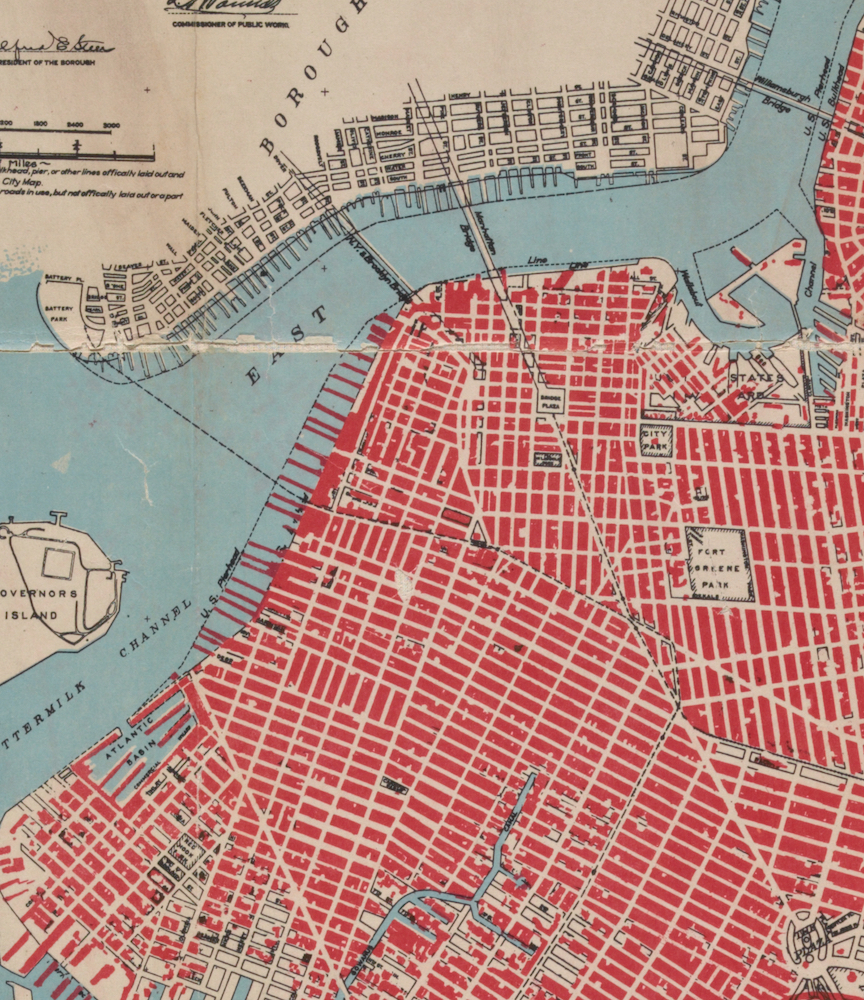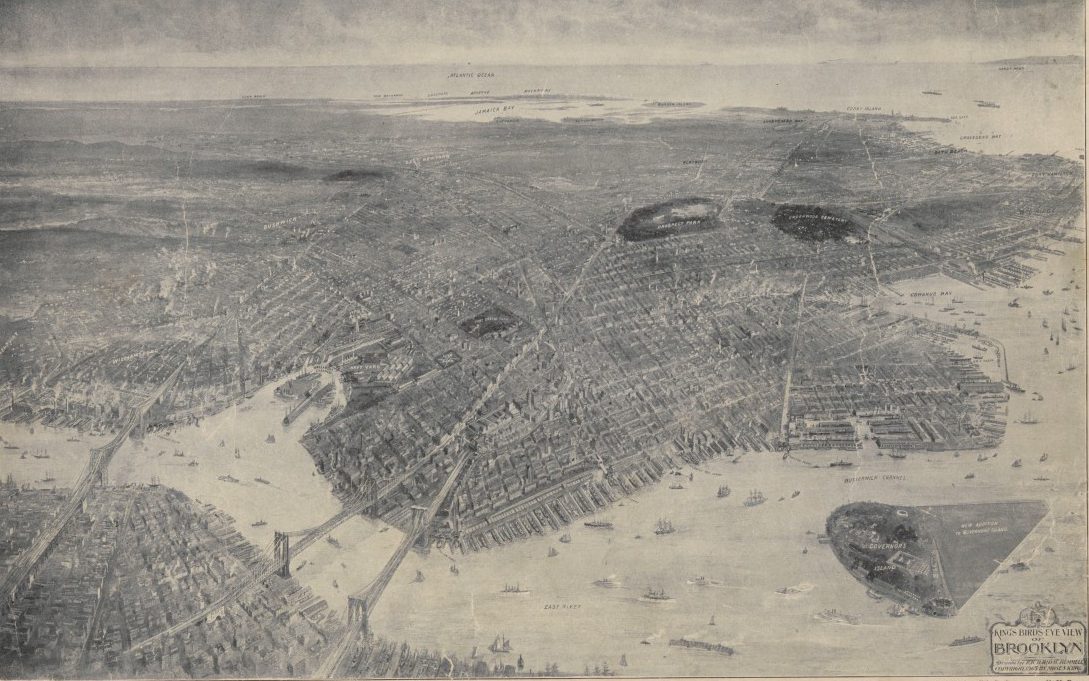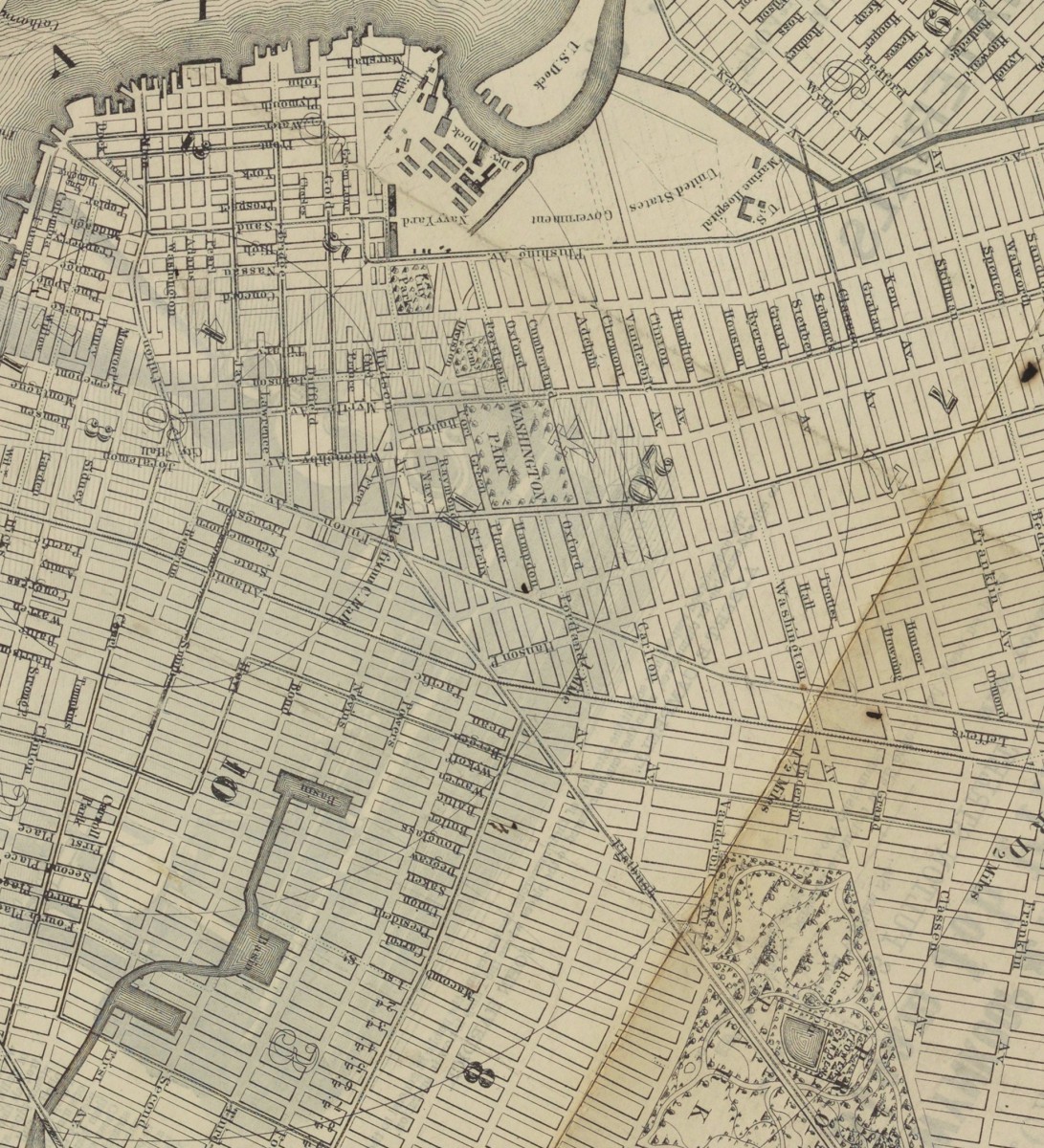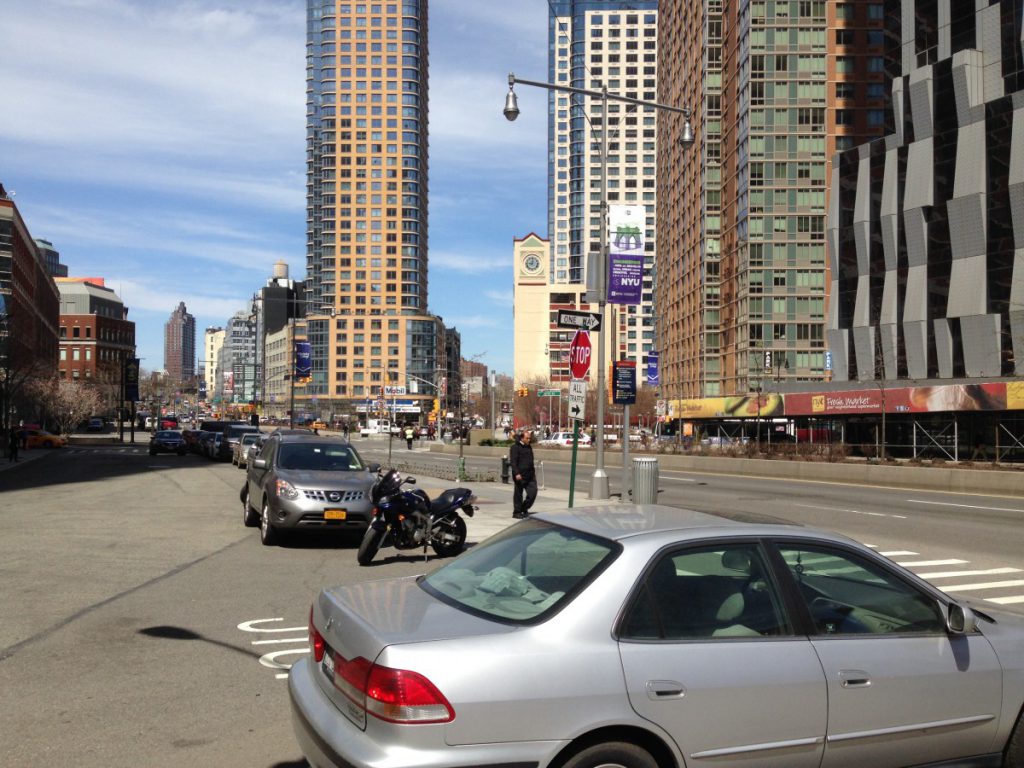At the turn of the 20th century, Brooklyn saw the introduction of the Manhattan Bridge and Flatbush Extension joining with Flatbush Avenue as a new major thoroughfare opening up a clear route from Manhattan to the central and south Brooklyn neighborhoods. This new diagonal, cut through the existing fabric of Brooklyn, was intended to open up the city to traffic flow. This endeavor was common in many other historic cities seeking to modernize and accommodate increasing traffic at higher speeds, including Paris and Rome. In the case of these two great cities, the new roads were cut but then the fabric repaired to integrate the new street into the overall character and culture of the city. In this case, however, the repair or the replacement of the fabric was not planned and/or executed to integrate the new street into the city. In this way, the planning process failed to reconnect the neighborhoods on either side of the cut that were previously seamlessly linked. This results in the new road becoming a undesirable dividing element focused on moving cars rather than establishing a new vital place in Brooklyn. This on grade urban expressway to this day suffers from this poor planning and lack of cohesive vision. The result is a Mean Street, a roadway that repels pedestrian activity and cuts the previously vital connectivity of the eastern neighborhoods into the core area of Downtown Brooklyn.
The development of the last decades show no interest in addressing this problem. The Metro Tech development only exasperates the condition at the critical point at the intersection of Myrtle Avenue, placing service lanes and loading docks in a setback zone along their frontage on Flatbush Extension. This added service territory pushes the buildings further away from the street, and along with ill placed open space leaves a vast 4.7 acre zone of haphazard definition with upwards of 250 feet between buildings. All of this is on top of a street design with a jersey barrier separation of the traffic lanes, which, while planted, only further divides and separates the east and west rather than aid in the creation of a unified place that helps join flanking neighborhoods. This problems remains for future generations to address and solve.









Leave a Reply